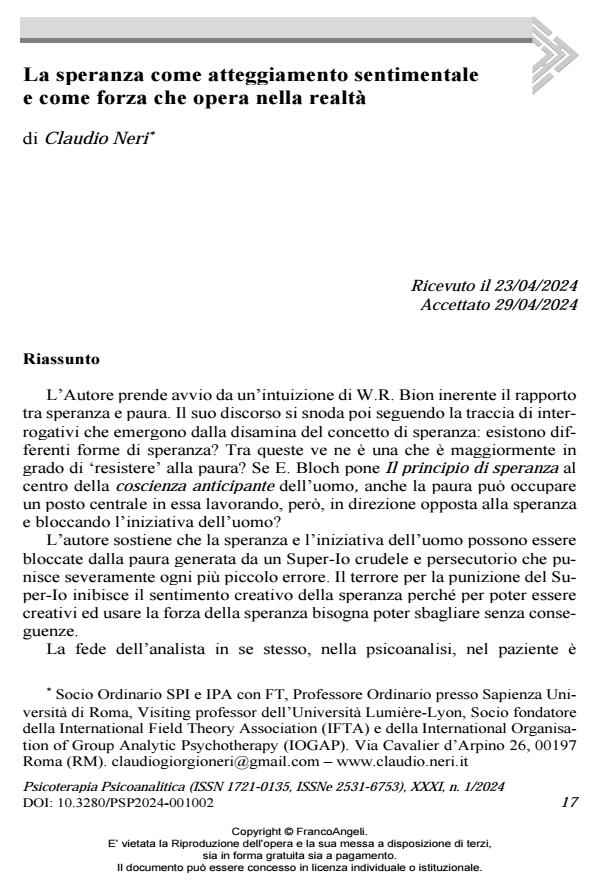Hope as a sentimental attitude and as a force that works in real life
Journal title PSICOTERAPIA PSICOANALITICA
Author/s Claudio Neri
Publishing Year 2024 Issue 2024/1
Language Italian Pages 8 P. 17-24 File size 187 KB
DOI 10.3280/PSP2024-001002
DOI is like a bar code for intellectual property: to have more infomation
click here
Below, you can see the article first page
If you want to buy this article in PDF format, you can do it, following the instructions to buy download credits

FrancoAngeli is member of Publishers International Linking Association, Inc (PILA), a not-for-profit association which run the CrossRef service enabling links to and from online scholarly content.
The author starts from an insight by W.R. Bion concerning the rela-tionship between hope and fear. His discourse then follows the track marked by questions that emerge from the examination of the concept of hope: are there different forms of hope? Among these, is there one that is most able to ‘resist’ fear? If E. Bloch places The principle of hope at the centre of man’s anticipatory consciousness, can fear also occupy a central place in it, working, however, in the opposite direc-tion to hope and blocking man’s initiative? The author argues that human hope and initiative can be blocked by fear generated by a cruel and persecutory Super-Ego that severely pun-ishes every smallest mistake. Fear of punishment from the Super-Ego inhibits the creative feeling of hope because in order to be creative and use the power of hope, one must be able to make mistakes without consequences. The analyst’s faith in himself, in psychoanalysis and in the patient is essential for the rooting of a hope-oriented attitude of the patient.
Keywords: hope, fear, Super-Ego, faith, suicide.
Claudio Neri, La speranza come atteggiamento sentimentale e come forza che opera nella realtà in "PSICOTERAPIA PSICOANALITICA" 1/2024, pp 17-24, DOI: 10.3280/PSP2024-001002